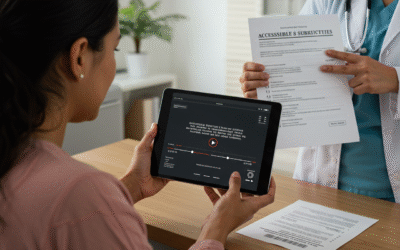In the healthcare field, medical translation plays a vital role — especially when dealing with regulatory documentation. These texts must be accurate, clear, and compliant with local and international standards. Artificial intelligence (AI) is changing how these documents are translated, but can it truly replace human expertise?
AI in medical translation for regulatory purposes
AI allows for the fast translation of large volumes of content. Tools like neural machine translation or automated systems improve turnaround times. For repetitive tasks or draft versions, AI can be very helpful.
However, AI tools often fail to understand context. They may misuse specialized terms or miss cultural nuances. Relying solely on machine output poses significant risks.
The value of human translation
A professional trained in medical translation not only speaks the language but also knows the technical terminology and regulatory landscape. Human translators adapt materials to fit each country’s legal framework — essential for drug approvals or medical device clearance.
Documents like informed consents, clinical manuals, or safety reports require nuance and precision. A mistranslation could compromise patient safety or delay a clinical trial.
AI or human translation? The answer is both
For effective medical regulatory translation, the best approach is to combine AI and human review. This workflow maximizes speed while ensuring linguistic accuracy and compliance through expert oversight.
Conclusion
Medical translation in regulatory contexts demands precision, ethics, and cultural awareness. AI is a valuable tool, but human expertise remains essential. At SumaLatam, we merge cutting-edge technology with human insight to deliver reliable, compliant, and high-quality medical translations.





